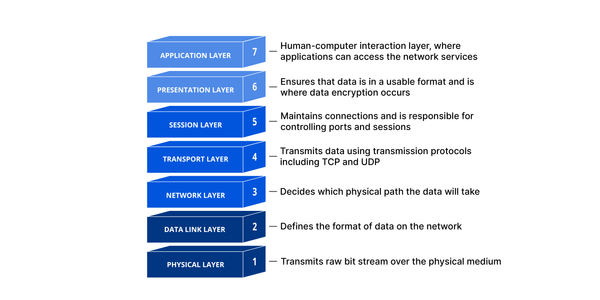In the vast and intricate web of the internet, a fundamental component works tirelessly behind the scenes to ensure we can access websites, send emails, and engage in online activities seamlessly. This critical element is the Domain Name System, commonly known as DNS. Despite its ubiquitous presence, DNS often remains an unsung hero. In this blog post, we'll unravel the mysteries of DNS, exploring its functions, components, and importance in our daily digital lives.
What is the Domain Name System?
The Domain Name System (DNS) is essentially the phonebook of the internet. While humans access information online through domain names like www.example.com, web browsers interact through Internet Protocol (IP) addresses, such as 192.0.2.1 or more complex IPv6 addresses like 2001:0db8:85a3:0000:0000:8a2e:0370:7334. DNS translates these human-friendly domain names into IP addresses, enabling browsers to locate and load internet resources.
How Does DNS Work?
To understand how DNS works, let's follow a typical journey of a web request from your browser to a website:
- Domain Name Query: When you type a domain name (e.g., www.example.com) into your browser, the first step is to check if the IP address is already cached locally. If not, the request is sent to a DNS resolver, often provided by your internet service provider (ISP).
- Recursive Query: The DNS resolver begins a series of queries to find the correct IP address. This process involves contacting multiple DNS servers in a hierarchical manner.
- Root Name Servers: The resolver first contacts one of the root name servers, which are the top of the DNS hierarchy. These servers don’t have the exact IP address but can direct the resolver to the correct top-level domain (TLD) server (.com, .org, .net, etc.).
- TLD Name Servers: The resolver then queries the TLD name server, which directs it to the authoritative name server for the specific domain (example.com).
- Authoritative Name Server: Finally, the resolver queries the authoritative name server for the domain, which provides the IP address associated with the requested domain name.
- Returning the IP Address: The resolver returns the IP address to your browser, which can then use it to access the desired website.
Components of DNS
DNS is composed of several key components:
- DNS Resolver: Also known as recursive resolvers, these are responsible for initiating and sequencing the queries that ultimately lead to the correct IP address.
- Root Name Servers: These are the first step in translating human-readable domain names into IP addresses, directing queries to the appropriate TLD servers.
- TLD Name Servers: These servers store information about domains within a specific TLD, such as .com, .org, or .net.
- Authoritative Name Servers: These contain the actual DNS records for a domain, providing the definitive answer for the IP address associated with a domain name.
Types of DNS Records
Several types of DNS records are used to direct traffic appropriately:
- A Record (Address Record): Maps a domain to an IPv4 address.
- AAAA Record (IPv6 Address Record): Maps a domain to an IPv6 address.
- CNAME Record (Canonical Name Record): Allows a domain to be an alias for another domain.
- MX Record (Mail Exchange Record): Directs email to a mail server.
- TXT Record (Text Record): Provides text information to sources outside your domain, often used for security purposes like SPF or DKIM.
Importance of DNS
DNS is crucial for the seamless operation of the internet. Here’s why:
- User-Friendly Navigation: DNS allows users to access websites using easy-to-remember domain names instead of complex IP addresses.
- Scalability: DNS is highly scalable, managing billions of domain names and ensuring the internet can grow without performance degradation.
- Redundancy and Reliability: With multiple DNS servers distributed globally, DNS ensures redundancy and reliability, meaning if one server fails, others can handle the load.
- Security: Advanced DNS features, such as DNSSEC (Domain Name System Security Extensions), help protect against certain types of cyber attacks by ensuring the responses to DNS queries are authentic.
Challenges and Future of DNS
While DNS is robust, it faces challenges such as DNS spoofing and DDoS (Distributed Denial of Service) attacks. Enhancements like DNSSEC and the adoption of more secure protocols aim to mitigate these risks. Additionally, the ongoing transition from IPv4 to IPv6 presents both challenges and opportunities for DNS to evolve.
Conclusion
The Domain Name System is a foundational technology that makes the internet user-friendly and accessible. By translating domain names into IP addresses, DNS enables seamless browsing, email communication, and countless other online activities. Understanding how DNS works, its components, and its importance helps us appreciate the complexity and efficiency of the internet we rely on daily. As the digital landscape continues to evolve, DNS will undoubtedly play a pivotal role in ensuring the internet remains scalable, reliable, and secure.
4o







